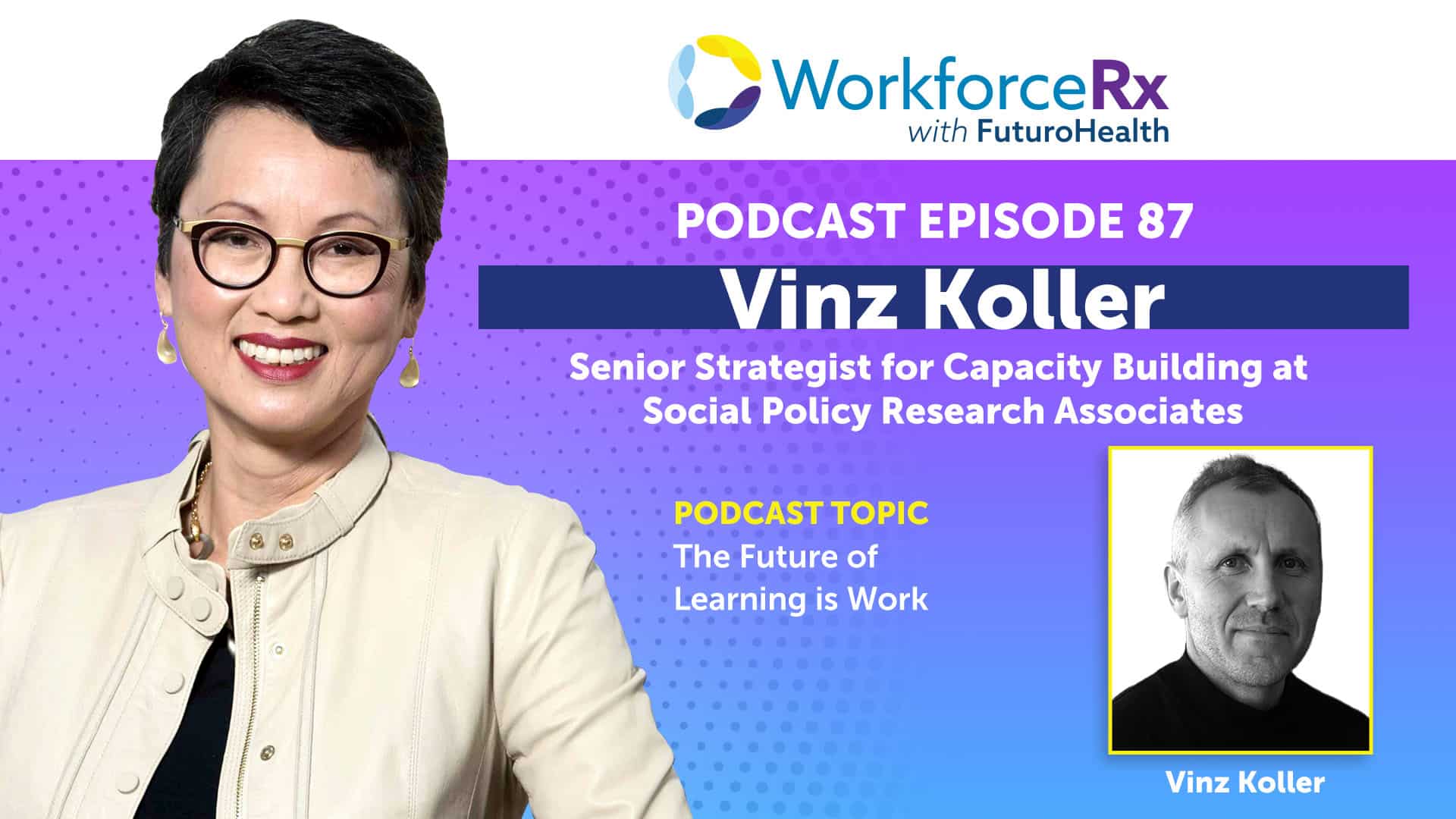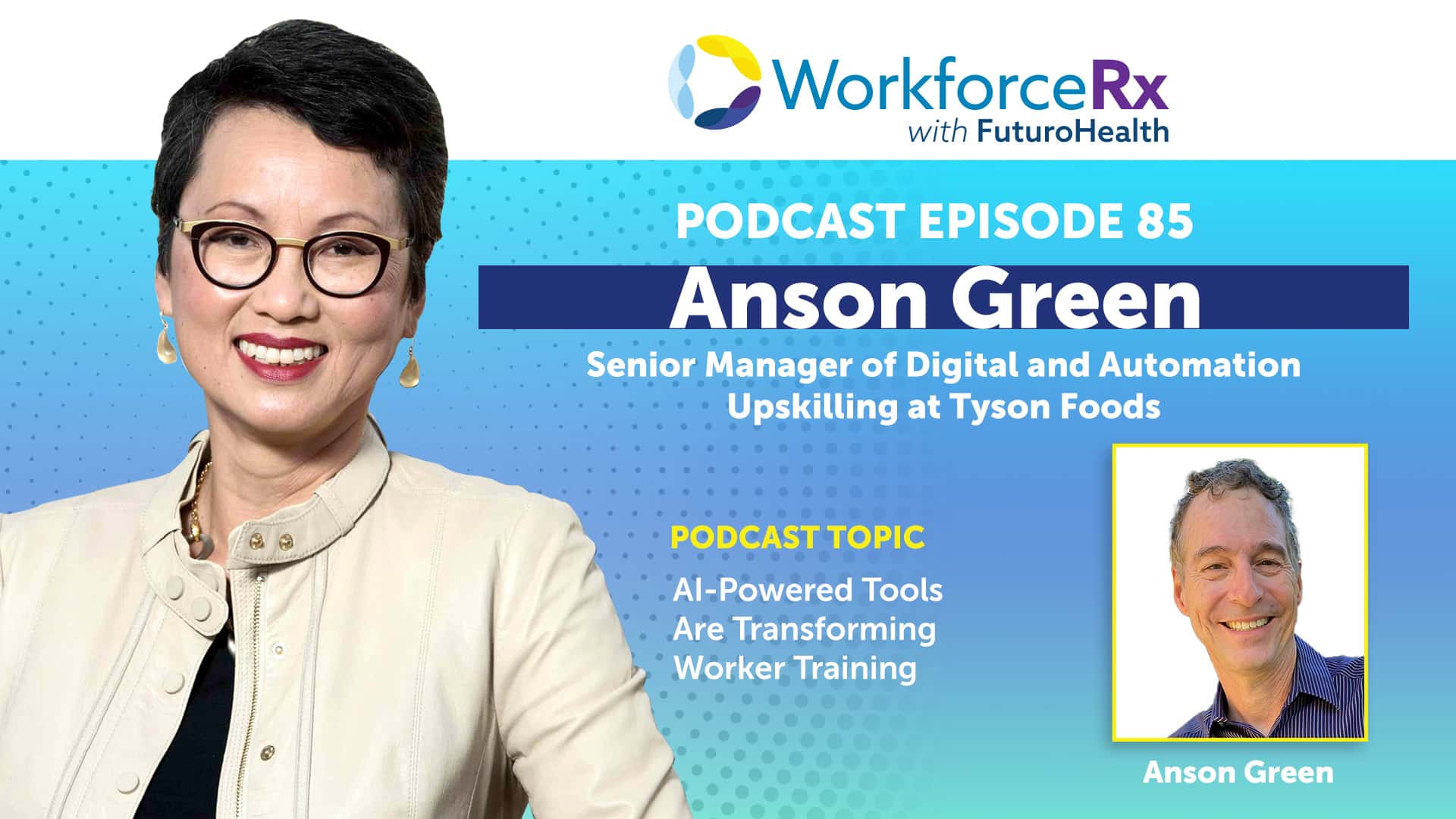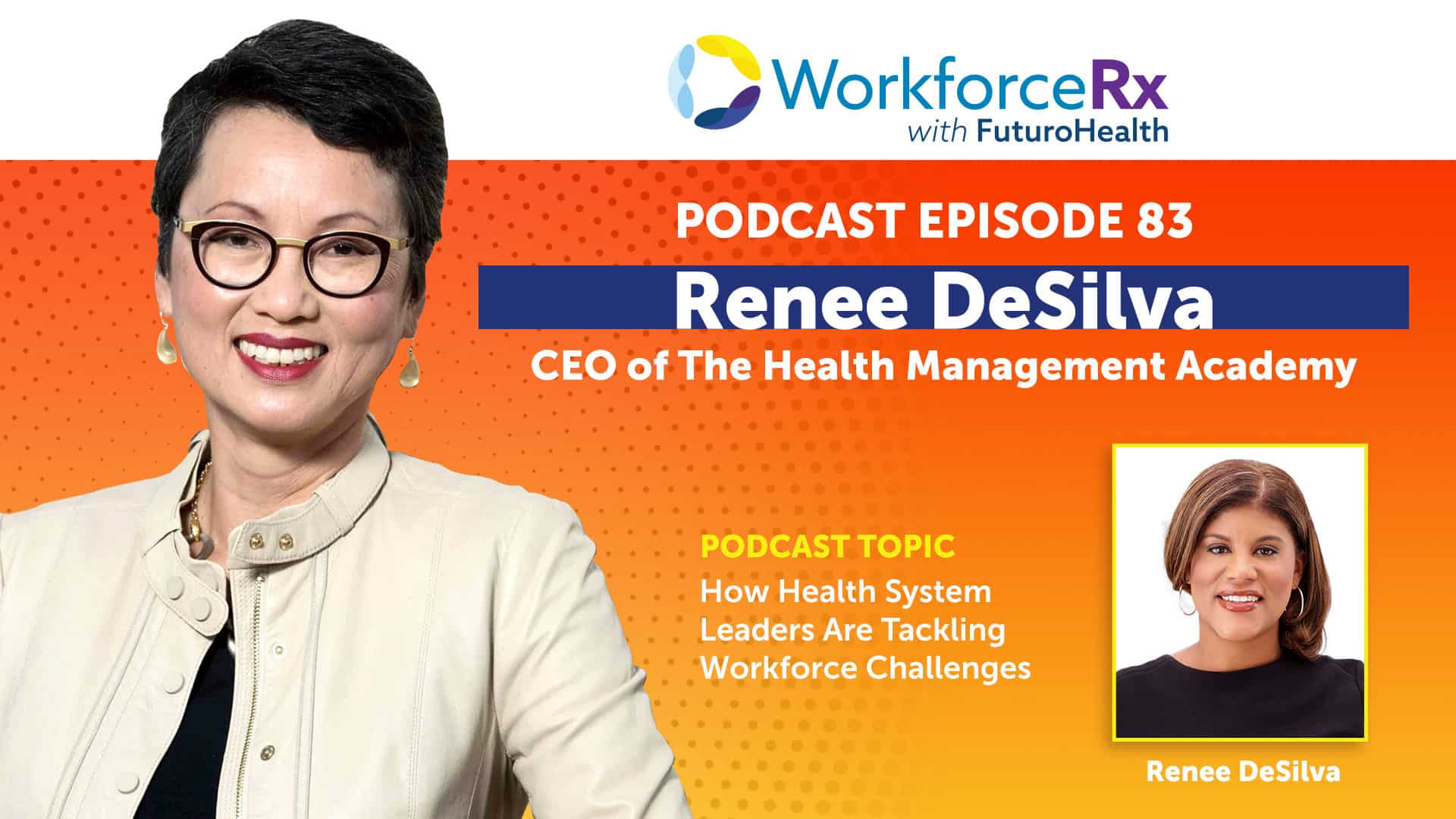One of the oldest forms of training, apprenticeship, has new relevance in the age of AI according to today’s WorkforceRx guest Vinz Koller, a nationally influential voice on the subject and self-described apprenticeship evangelist. Why? Because the pace of change brought about by AI and other technologies has accelerated to a point where predictions about what specific skills workers in most fields will need even a year from now have questionable value. “The model of apprenticeship is particularly appropriate because in my view, apprenticeship is a look into the future. You are actually in the workplace. You don’t have to predict what things will be like in ten years. The workplace will evolve and you will evolve with it,” Koller tells Futuro Health CEO Van Ton-Quinlivan. In his role as senior strategist for Capacity Building at Social Policy Research Associates, Koller works with local communities, states, and the US government to determine how to make work-based learning more accessible to more people. On the learner/worker side, a welcome step would be enabling apprentices to earn an associate-level degree upon completion of their training. For employers, key needs include regulatory changes to make hosting apprentices easier and help with setting-up and tracking programs. The aim, he says, is to turn more employers into “co-producers of talent” instead of just consumers of it. This expansive conversation also covers the multi-faceted return on investment for employers, the need for high school recruitment programs, and the role apprenticeships could play in reducing student debt.
Continue readingAquilina Versoza, Pilipino Workers Center of Southern California: Could Worker Co-ops Transform the In-Home Care Workforce?
Our exploration of solutions for growing and strengthening the direct care workforce continues on this episode of WorkforceRx with a close look at a potentially transformative employee-owned cooperative model that’s gaining traction in California. In the eyes of our guest, Aquilina Soriano Versoza, the higher pay and better working conditions that co-ops can provide will help grow an urgently needed workforce and address current injustices that prevail in the “wild west” of private home care. “Very typically, Filipino immigrant caregivers are receiving $5 or less per hour with no overtime, no job security, and no benefits. Some are earning just above $2 an hour,” she explains to Futuro Health CEO Van Ton-Quinlivan. As executive director of the Pilipino Workers Center of Southern California, Versoza has helped pioneer a co-op model that, in addition to higher wages, offers on-the-job skills training, education in operating a co-op business, and the opportunity to work in teams. There are several co-ops up and running now, and a franchise approach is being put in place to increase scale. “In five years, we have the vision that every metropolis in California will have a cooperative option, both for workers as well as individuals who want to access long term care through a cooperative.” Spend some time with this thoughtful national leader who sees the crisis in home care as an opportunity to improve the quality of life for both the seniors receiving care and the workers providing it.
Continue readingAnson Green, Senior Manager of Digital and Automation Upskilling at Tyson Foods: AI-Powered Tools Are Transforming Worker Training
“I think training is gonna be so different looking in the next few years than what we’re used to,” says Anson Green who brings a very seasoned eye to the workforce training landscape. After decades working in adult education, Green is now helping Tyson Foods train an incredibly diverse global workforce and, in the U.S. 60% are immigrants with very limited digital and language skills. As he explains to Futuro Health CEO Van Ton-Quinlivan, succeeding at this challenge starts with a belief in their ability to learn. “They’re very, very mobile in terms of their models of how to get things done, and they figure things out.” The big change he sees coming is due to AI-powered training programs that allow him to customize content by reading level, language and other factors with a few clicks instead of many hours of effort. Another key factor is that technology is getting easier to use. “We’ve got this really sweet spot where robots that five years ago would have taken an associate’s degree to be able to run, I could teach you how to run in an afternoon.” This is a great chance to learn about leading edge training programs at one of the world’s largest food companies and to find out about a hidden workforce training jewel in nearly every US community.
Continue readingRachel Wick, Blue Shield of California Foundation: Respecting the Work That Makes All Other Work Possible
“I’m able to be here with you today because my son is at a wonderful childcare provider home,” says WorkforceRx guest, Rachel Wick, to illustrate how critical direct care workers are to our lives and economy. Wick, the senior program officer for Blue Shield of California Foundation, describes childcare and direct care provided in the home for the elderly and disabled as ‘the work that makes all other work possible.’ As she tells Futuro Health CEO Van Ton-Quinlivan, it’s time our society valued it as such and invested in the sector the way we invest in public schools and healthcare. Wick is hoping the foundation’s new report, Forging a Sustainable Future for California’s Direct Care Workforce, will help provide a shared understanding of these workers and their challenges among all relevant stakeholders to help advance needed policy changes. Raising up this worker population and increasing economic security for other low-income communities is part of the foundation’s overall mission to remove barriers to health and wellbeing, especially among people of color, in order to build lasting and equitable solutions that will make California the healthiest state. “As we listen to families across California, what they tell us is that health and wellbeing and stability is just not possible when you are caught in a relentless daily struggle for survival.” Tune in to learn more about the role economic security plays in health, and how unionization and cooperative business models may be part of the answer to elevating a critically important workforce.
Continue readingRenee DeSilva, CEO of The Health Management Academy: How Health System Leaders Are Tackling Workforce Challenges
If you would love to know what’s on the minds of the leaders of the nation’s largest health systems as they tackle workforce challenges and a host of other issues, but don’t happen to have the time to talk to all 150 of them, then this episode of WorkforceRx is for you. The well-placed source supplying this intelligence is Renee DeSilva, CEO of The Health Management Academy which provides advice, research, knowledge sharing, and leadership development for hospitals and other healthcare companies. Although labor costs and labor shortages continue to vex healthcare leaders, DeSilva is encouraged by the energy and innovation she’s seeing around solutions such as upskilling current employees, leaning into skills-based hiring, and creating talent pipelines with local educators. “I’m seeing a lot of creativity and partnership energy around solving the workforce challenge structurally, and then also just making the folks that we do have more productive and creating more of a thriving environment around them,” she tells Futuro Health CEO Van Ton-Quinlivan. Leaders are also taking a fresh look at leveraging the knowledge and talents of nurse managers and giving them greater agency to implement solutions. As a student of leadership and a leader herself, DeSilva appreciates the front row seat she has watching members of the C-suite navigate a dizzying array problems. “It’s really interesting to see how each of them leans into their unique gifts. I think that’s where everyone has their power alley.” You’ll leave this conversation with a better sense of the paths being taken to the future of care and the tactics leaders are using to get there.
Continue reading




